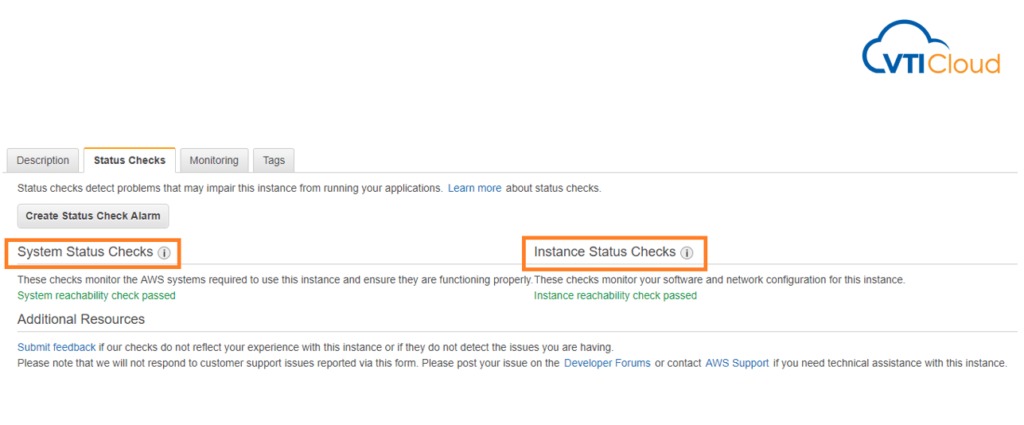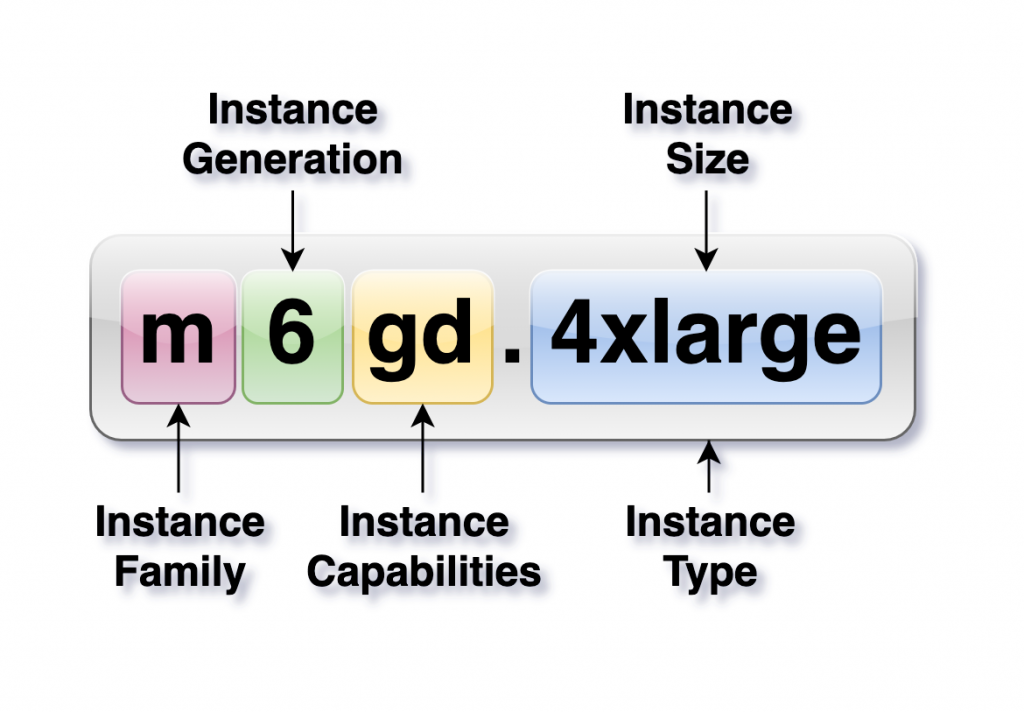AWS EC2 Status Checks: An Overview

AWS EC2 status checks are automated health checks that monitor the functionality and operability of your EC2 instances. They provide crucial insights into the state of the underlying hardware, network connectivity, and the operating system of the instance. These checks are fundamental to ensure the high availability and reliability of your workloads on AWS. Types of EC2 Status Checks Default Configuration of Status Checks By default, status checks are enabled for every EC2 instance upon launch. These checks are configured and managed by AWS automatically. The results of these checks are visible in the AWS Management Console under the “Status Checks” tab of an EC2 instance, or via the AWS CLI and SDKs. Can We Modify Default Configuration? AWS does not provide options to directly alter the predefined system and instance status checks. However, you can customize the handling of failed checks by configuring CloudWatch Alarms: Defining Custom Health Checks While AWS EC2 status checks focus on the infrastructure and OS-level health, you might need additional monitoring tailored to your application or workload. This is where custom health checks come in. Here’s how to implement custom checks: sudo yum install amazon-cloudwatch-agentsudo vi /opt/aws/amazon-cloudwatch-agent/etc/amazon-cloudwatch-agent.json Example configuration snippet: { “metrics”: { “append_dimensions”: { “InstanceId”: “${aws:InstanceId}” }, “metrics_collected”: { “disk”: { “measurement”: [“used_percent”], “resources”: [“/”] }, “mem”: { “measurement”: [“used_percent”] } } }} Start the cloudwatch agent:sudo /opt/aws/amazon-cloudwatch-agent/bin/amazon-cloudwatch-agent-ctl -a start Example: Status Check Handling Scenario: Automate recovery when a system status check fails. { “Version”: “2012-10-17”, “Statement”: [ { “Effect”: “Allow”, “Action”: [“ec2:RebootInstances”], “Resource”: “*” } ]} 2. Create a CloudWatch alarm: 3. Test: Interview Questions and Answers
Understanding AWS EC2 Instance Classes: Demystifying M and R Instances

When it comes to AWS EC2 instances, many developers, engineers, and interviewees often struggle to clearly explain the difference between instance classes like M and R. These instances are essential in optimizing resource allocation and improving performance in the cloud. However, misconceptions around what these classes stand for and their use cases can lead to confusion. In this detailed guide, we’ll dive into the key differences between instance classes and types, focusing on M and R instances, to help build a clearer understanding — whether you’re preparing for an AWS interview or just seeking to enhance your AWS knowledge. What Are EC2 Instance Classes? Before we get into M and R instances specifically, let’s first understand the concept of instance classes. An EC2 instance class refers to a family or group of instances designed to meet specific resource needs for particular workloads. AWS organizes its instances into classes based on performance characteristics, which enables users to select the best instance for their requirements. Each class is tailored to optimize specific resources like memory, computing power, storage, or networking performance. Here are some common EC2 instance classes: Instance Types vs. Instance Classes An important distinction to make when discussing EC2 instances is the difference between instance types and instance classes. Knowing both the class and the type is critical when choosing the right instance for your workload, as the specific type within a class may be better suited for your needs. Breaking Down M Instances: General Purpose Workhorse M instances are AWS’s General Purpose instances, and they are designed to provide a balance between CPU, memory, and network performance. These instances are ideal for workloads that require a relatively even distribution of resources and don’t lean heavily on one particular resource like memory or CPU. Use Cases for M Instances M instances are commonly used for: R Instances: Memory-Optimized Performance R instances, on the other hand, are part of AWS’s Memory-Optimized instance class. These instances are designed to handle workloads that require a significant amount of memory. If your application deals with large datasets that need to be processed in-memory or requires high-speed access to memory, R instances are your best bet. Use Cases for R Instances R instances are well-suited for memory-intensive applications like: Key Differences Between M and R Instances While M and R instances may appear similar at first glance, their main difference lies in the optimization of resources: The choice between M and R instances should be based on your workload requirements. If your application needs balanced performance, M instances are the way to go. But if your application is memory-intensive and requires large amounts of memory for processing data, R instances are the better choice. Why This Matters for Interviews and Real-World Scenarios Asking about M and R instances in interviews helps test a candidate’s ability to understand AWS resource allocation at a deeper level. It’s not just about remembering that “M is for memory” (which is actually incorrect!) — it’s about understanding how to choose the right instance class for specific workloads. For interviews, knowing the difference between instance classes shows a deeper understanding of AWS’s capabilities. Employers want to see that you’re not just memorizing terms but understanding how to apply AWS resources efficiently in real-world scenarios. For practical use, understanding instance classes and types helps optimize your application’s performance and cost-efficiency in the cloud. Selecting the wrong instance class could lead to unnecessary expenses or suboptimal performance. Here are some examples of commonly used AWS EC2 instance classes and their specific use cases: These examples illustrate how different classes address specific resource needs (CPU, memory, storage), allowing you to tailor your AWS environment to the demands of your workload. Do you know what is the class for t2.micro instance and why it is used ? The T2.micro instance belongs to the T class, specifically the T2 family of Burstable Performance instances. These instances are designed to provide a baseline level of CPU performance with the ability to burst when needed. The T2.micro instance is ideal for low-traffic applications, small databases, or development and testing environments. It offers 1 vCPU and 1 GB of RAM, and it’s commonly used in AWS’s free tier for light workloads that don’t require consistent, high CPU usage.


